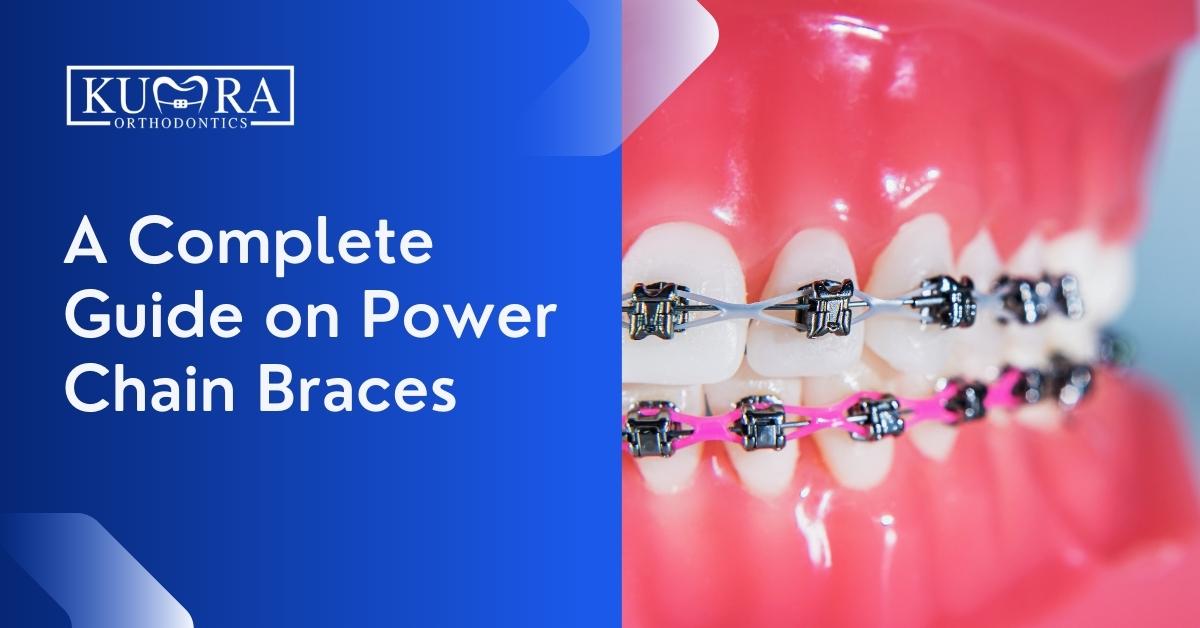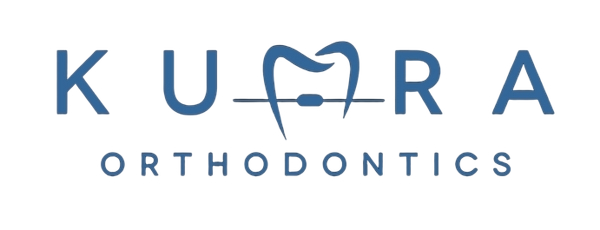For those reaching the completion of their orthodontic treatment and anticipating a flawless smile without braces, congrats! Your orthodontist may also offer power chain braces to close any remaining gaps between your teeth.
What are Power Chain Braces?
Many ‘O’-shaped rubber bands are linked together to form a chain in the case of power chains. These replace ligatures. They may be combined in some instances. Of course, this is contingent upon the situation.
Wire chains are another option. As indicated, they are wire power chains, not rubber ones, and are only utilized in the most extreme conditions. If you’re not sure which kind you need, ask your orthodontist.
Power chains fill gaps and use more force than elastic ligatures to move teeth quickly. If you’ve had a tooth removed, you’ll require a dental bridge or denture. After they’ve completed their duties, they may be given the option to extend their contracts. This is to reassure the orthodontist that the teeth will remain in place.
Orthodontists frequently propose the use of power chains to close gaps between teeth. Without excessive strain on the teeth, the chains may apply substantially greater force than brackets and wires alone. As a result, modifications can be made significantly more quickly. Additionally, power chains can be employed to assist in the correction of misalignment, malocclusion, and crooked teeth.
Types
Power chains and braces do not come in a one-size-fits-all configuration. There are more alternatives beyond the obvious ones, and even within those selections, there are numerous widths and lengths available to customize your power chain! Your orthodontist will play an active part in selecting the most appropriate kind for achieving clinical goals.
Closed, short, and long power chains are all examples of power chains. They all have an adjustable inner width between each loop to accommodate the bracket to which they are attached.
Do Power Chains Hurt?
In the beginning phases of treatment, the installation of connected ligatures is likely to produce some discomfort or perhaps minor pain. However, this discomfort will reduce over time, and you won’t experience any pain at all.
Within a week, you will feel better than you have in a long time. Until then, you may need to eat soft foods to avoid more irritation and suffering. Power chain braces, like other ligatures, can be stained easily by foods like curry, wine, coffee, and so on. As a result, you should brush your teeth after meals if you wear them.
Your orthodontist will inform you how to manage that time effectively and alleviate the pain. The tenderness you’re feeling should go away after a short time. You must adhere to your orthodontist’s dietary recommendations at this time and for the duration of your orthodontic treatment.
Needing an orthodontic appointment?
Visit Kumra Orthodontics Washington, DC or Kumra Orthodontics Stafford, VA, and request an appointment with us!
Maintenance
Your orthodontic treatment includes power chains as an additional component. You must maintain the same level of oral hygiene with clear aligners as you would with traditional metal braces.
Having extra food stuck in the elastics isn’t necessarily a bad thing. You may also have to brush for a longer time. Poor oral hygiene, even for a short time, might lengthen your treatment duration and cause harm to your teeth and gums, as always. Most orthodontic cases involve using power chains, which are a standard aspect of the procedure. You’ll be able to smile more confidently in no time with the help of your power chain.
Risks and Side Effects
Power chain braces carry the same risks and adverse effects as any other dental braces.
Tooth decay
There is an increased difficulty in brushing and flossing teeth and gums when you have braces, regardless of whether or not they are coupled to power chains. As a result, your gums may become infected due to the accumulation of plaque. Gum disease and tooth decay can be prevented by brushing your teeth many times daily.
Short tooth roots
Your teeth are linked to the jaw by the roots of your teeth. Root resorption, or the shortening of your dental roots, can be caused by applying pressure to your teeth, such as using power chain braces. In most cases, this is not a problem, and the process comes to an end once your braces are removed.
Lost correction
Braces of any kind can cause teeth to shift out of place. This is no exception. After your braces are removed, your orthodontist will likely prescribe the use of a retainer to help keep your teeth in place.
Related: Types of Retainers You Should Know About
Pain
In the beginning, you may feel some discomfort as your braces are put on. However, after your braces have been placed on for a week or after they have been adjusted, you should no longer experience any pain or discomfort.
Constant adjustments
To keep up with your teeth, elastomeric power chains require constant adjustment. Adjustments in treatment are often made every four to six weeks for each patient.
Contact Kumra Orthodontics to learn more about power chain braces
If you have several smiling issues, your braces are an excellent multi-purpose orthodontic solution. However, straightening teeth quickly and properly may require some assistance. Many orthodontic difficulties can be solved with the help of a power chain on a patient’s braces. Visit Kumra Orthodontics, and we’ll be happy to assist you with your orthodontic concerns!



